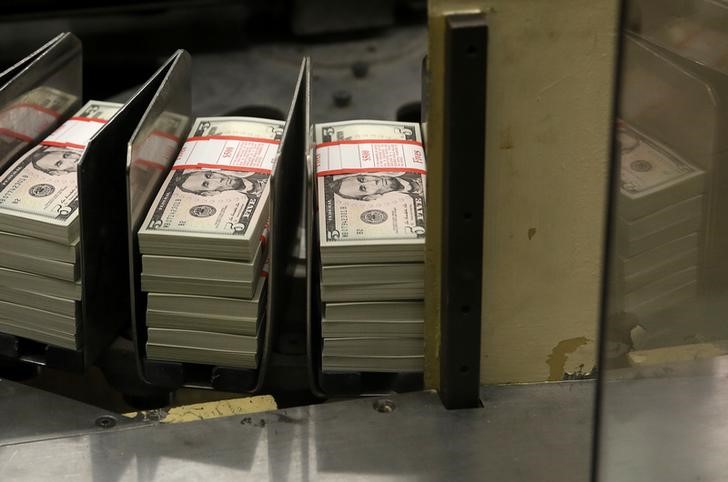By Peter Nurse
Investing.com - The dollar edged lower in early European trade Friday, weighed down by disappointing employment and housing data and with the tech sector continuing to suffer strong selling in the equity markets.
At 3 AM ET (0700 GMT), the Dollar Index, which tracks the greenback against a basket of six other currencies, was down 0.2% at 92.823, the EUR/USD rose 0.2% to trade at 1.1865, while USD/JPY was largely flat at 104.70, but still on course for a gain of 1.5% over the week.
Employment data, released on Thursday, showed that initial jobless claims fell by less than expected. At the same time, data from the housing market showed that part of the economy cooling off after three months of an extremely strong rebound.
So while the U.S. economy is recovering, the rebound seems to be slowing. This prompted the Federal Reserve to pledge to keep rates near zero until at least the end of 2023, but the central bank also called for more fiscal help from Congress, which still looks unlikely.
“As long as market expectations of an economic rebound hold (second wave lockdowns and the fiscal response will have a say here), we’d say that negative real yields will keep the dollar bear trend intact and investors will use position adjustments to reset dollar short positions,” wrote ING’s Chris Turner, in a note.
Additionally, U.S. tech stocks suffered another rout Thursday, with the tech-heavy Nasdaq Composite index falling 1.3%, which contributed to a weak dollar.
“For the dollar to regain its upward trend, it’s necessary for the market to make sure that the U.S. stocks take a pause from a correction in stock prices,” said Mizuho Securities chief currency strategist Masafumi Yamamoto, in a Reuters report.
Elsewhere, GBP/USD fell 0.1% to 1.2964, despite retail sales rising by 0.8% in August, slightly above the 0.7% forecast, as parts of the sector enjoyed a much faster rebound than most of the economy.
However, the focus of sterling traders is elsewhere as policymakers in the Bank of England indicated Thursday that they’re considering using negative interest rates as the central bank prepares for the possibility the U.K. government fails to reach a trade deal with the European Union by the end of this year.
